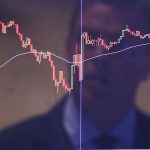Where We Are Mid-Year
Economic tremors early in 2024 have settled into a steady state with inflation waning and economic expansion continuing. As a result, indications are that the Federal Reserve (Fed) may cut rates once or twice this year. At the same time, prices have begun to decline and, though unemployment has risen slightly, the job market remains strong.
The Consumer Price Index (CPI) report Thursday showed inflation fell .1 percent in June. That is the first decline since May 2020.
However, even before the CPI report, there were indications that the economy was continuing to expand while inflation was ebbing. Those indications came in Fed Chair Jerome Powell’s Congressional testimony this week and mid-year reports from J. P. Morgan and Goldman Sach.
Rocky Start
This year began with high hopes for inflation moderation and the prospect of multiple interest rate cuts. However, inflation whipsawed higher in the first quarter. As a result, the Fed did not see the numbers to justify a rate cut in the first half of the year.
In addition, the job market remained strong continuing a run of 4 percent or lower unemployment until last month’s .1 percent uptick. Meanwhile, the stock markets seemed not to care.
Consumer Price Index Shows Inflation Declining
From June 2023 through June 2024, the Core CPI increased by 3.3 percent. That marks the smallest annual advance in over three years.
The core CPI measures consumer prices minus food and energy costs. They are excluded because of their volatility.
Much of the decline in CPI has come over the last three months. From April to May the core index rose .2 percent. That marked a decline of .1 percent from the previous month. In addition, it was the smallest increase since October.
“We got another CPI report that points to celebratory rate cuts potentially in September,” Callie Cox, Ritholtz Wealth Management strategist, told Yahoo Finance. “What we saw today was basically inflation coming down but not too quickly, and that’s exactly what the Fed wants to see.”
Rate Cuts
Powell appeared Tuesday before the Senate Banking Committee and Wednesday before the House Committee on Financial Services. In his semi-annual monetary policy report to Congress, he said the economy was no longer “overheated” and the likelihood of interest rate cuts was building.
Powell told the committees that cutting interest rates is not tied to the Fed’s goal of reaching two percent inflation.
“You don’t want to wait until inflation gets all the way down to two percent,” Powell said, “because inflation has a certain momentum. If you waited that long, you’ve probably waited too long, because inflation will be moving downward and will go well below 2%, which we don’t want.”
Inflation dropping below two percent would risk plunging the economy into a recession. Conversely, cutting rates too soon runs the risk of fueling an inflation flare-up.
The Fed measures inflation using the personal consumption expenditures price index (PCEPI). That index for May was 2.6 percent. The June PCEPI will be reported on July 26.
Balancing Act
The Fed is balancing price stability for consumer goods and low unemployment Powell referred to the two elements as mandates.
“We’re at a place now where the risks to the two mandates are much more in balance than they were before,” Powell said, “and that means it’s not just about getting inflation down. The job is not done on inflation, we have more work to do there. But at the same time, we need to be mindful of where the labor market is.”
Growth
Two factors have stimulated growth this year – consumer spending and investment spending.
Although consumer spending has remained a key aspect of the current economic growth, it is slowing. At the same time, wages have continued to grow. In fact, in April, wage growth hit 4.7 percent while inflation was at 3.4 percent, according to Statista.
A mid-year investment analysis from J. P. Morgan sees these factors contributing to continued growth.
Morgan’s “Mid-Year Investment Outlook” stated: “. . consumer spending has remained remarkably strong even in the face of dwindling pandemic savings. With an extended period of positive real wage growth and significant recent gains in wealth, consumer spending should continue to drive the expansion forward into 2025.”
Analysis from Goldman Sachs shares a similar view.
Noting that consumer expenditures rose 2.6 percent in April, compared to three percent last year, while retail sales increased only 0.1 percent in May, Goldman termed consumers “healthy”.
“In part, that’s because of relatively high levels of employment and household wealth, and low levels of debt,” Goldman maintains. “The team forecasts 2.5% real (inflation-adjusted) disposable income growth for the US consumer in the fourth quarter of 2024, year over year.”
Stock Market
This year might be regarded as the one in which the world has officially recovered from the 2020 pandemic crash.
Leading the charge has been the S&P 500. The index rose 14.5 percent in the first six months of the year. However, much of that gain has come from AI and companies positioned to gain from generative AI.
Morgan says there are other factors contributing to steady investment spending despite high interest rates and a credit crunch brought on in part by a small number of bank failures last year.
“This resilience largely reflected healthy corporate balance sheets, federal government incentives, and a surge in demand for AI-related technology,” according to Morgan. “This also should continue into 2025, providing the potential for continued moderate economic expansion in the absence of a major shock.”
Read the full article here
















